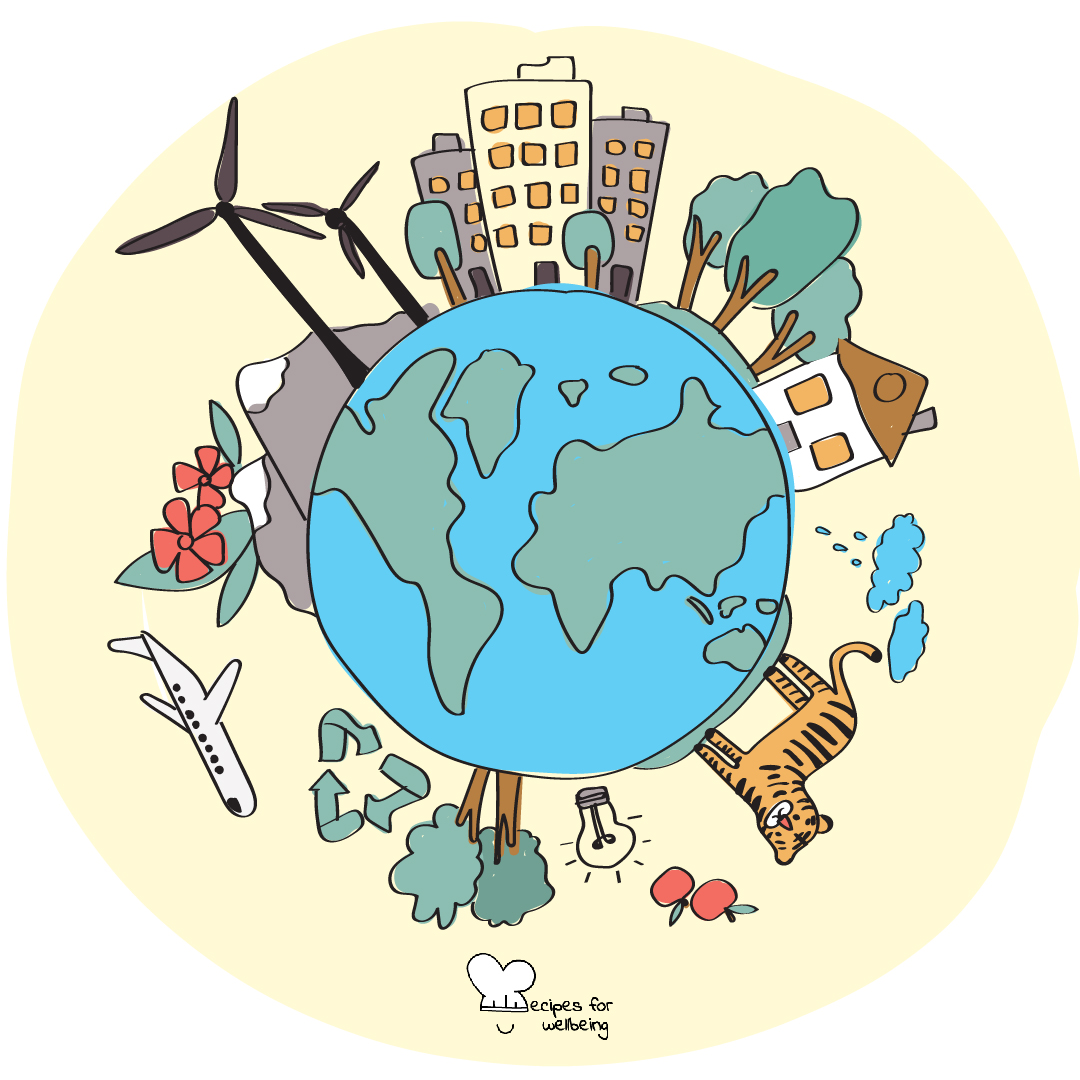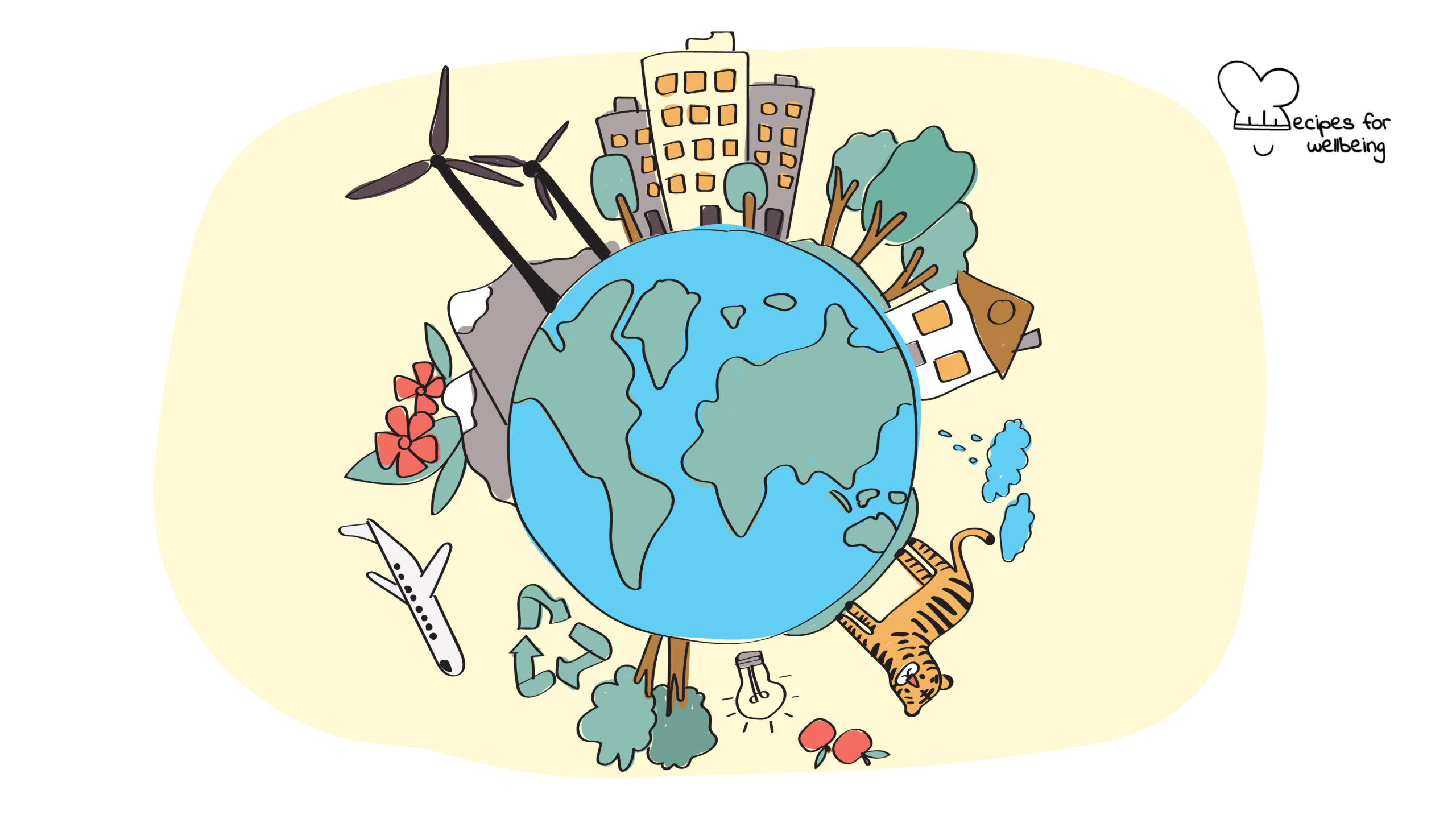
Happy Planet Index
Any reality we are given is not set in stone, it can be changed. ―Christiana Figueres
👥 Serves: 26-40 people, 41+ people
🎚 Difficulty: Easy
⏳ Total time: 1 day
🥣 Ingredients: 1 data analyst, creativity, open-mindedness
🤓 Wholebeing Domains: Bioempathy, Community, Radical Care
💪 Wholebeing Skills: Allyship, Caring, Ecosystem harmony, Nature kinship, Respect

Happy Planet Index
📝 Description
Use the Happy Planet Index for sustainable wellbeing.
Do you ever stop to consider how Mother Earth is doing?
The way we humans are currently living, prioritises short-term over long-term growth, extractive over regenerative practices, and anthropocentric over biocentric perspectives. However, what many do not realise is that we are not separate from Nature, in fact: we are Nature. As the late Vietnamese Buddhist monk Thích Nhất Hạnh reminds us in his Letters to Mother Earth, when we “perpetrate violence towards our own and other species, we are violent towards ourselves; and when we know how to protect all beings, we are protecting ourselves.”
The critical question is: “Is it possible to live good lives without costing the Earth?” The Happy Planet Index (HPI) was developed in 2006 and strives to measure sustainable wellbeing by ranking countries around the globe on how they use environmental resources and their contribution to wellbeing. The index uses the following equation: it multiplies a country’s wellbeing by their life expectancy before dividing by its ecological footprint.
How do you think our world is doing?
In 2022, only one third of countries are living within their environmental limits and NO country meets all three goals for wellbeing, life expectancy, and ecological footprint. Click here to find out where your country sits on the list. (Hint: In 2022, Costa Rica will be in first place!)
This recipe has been inspired by the work done by the Happy Planet Index team and adapted by our wellbeing content writer collaborator Marissa Del Mistro.
👣 Steps
Step 1 – Understand the HPI (30’)
Once again, the equation to calculate the HPI index is determined by multiplying a country’s well being by its life expectancy, then divided by its ecological footprint. Let’s have a closer look at all three elements:
- Wellbeing, in this equation, is determined by taking the medium of all responses from the surveyed community to this question: “Where 10 represents the best possible life for yourself and 0 represents the worst possible life for yourself, where do you feel you stand at this present time in your life? It is known as the wellbeing ‘Ladder of Life’”.
- Life expectancy is determined by taking the medium number of years an infant born in a given country is expected to live, if prevailing patterns of age-specific mortality rates, in the country, stay the same throughout the infant’s life. Life expectancy can help showcase the overall standard of health in a given country.
- And finally, ecological footprint, which is a consumption equation, is determined by the average amount of land needed, per head of population, to sustain a country’s typical consumption patterns. This includes any land needed to provide the renewable resources people use (most importantly food and wood products), an area occupied by infrastructure, and the area required to absorb CO2 emissions.
Step 2 – Administer the survey in your community (5 hours)
We recommend, if available, using existing data provided by the HPI team. Alternatively, you may consider surveying your community using the wellbeing question shared in step 1, alongside data regarding life expectancy and your community’s ecological footprint.
If you choose to survey the local people in your community, you can do so online or using paper-based surveys, but we highly encourage you to collaborate with expert survey administrators, data collectors, and data analysts to ensure the quality of the survey and of its results.
Step 3 – Work with the data (ongoing)
The data can offer an eye-opening understanding of where your community sits within the world. Tangible practices that can be enforced for impact on the greater community are:
- Working respectfully and realistically with the local community and indigenous people on environmental based projects by Creating Biocultural Protocols.
- Fostering clean commute initiatives such as biking to work, walking, carpooling, and using public transportation.
- Establishing recycling and composting programs that are easy and accessible to everyone, creating food waste programmes, and investing in green energy practices.
- Looking into incorporating the principles of a Doughnut Economy, which promote community development while respecting social and planetary boundaries.
- Focusing on Community Wealth Building, an economic framework that puts value on individuals and communities to foster greater wealth and success through plural ownership.
- Creating a unique Theory Of Change for Wellbeing. This can help your community to discover new, different ways to achieve your desired impact and move towards your vision.
- Developing programmes that foster inclusion in the community, especially for marginalised groups. For example, refer to our recipe “LGBTQIA2S+ allies in the workplace” for inspiration.
- Supporting, funding, and providing incentives for small businesses to grow sustainably.

